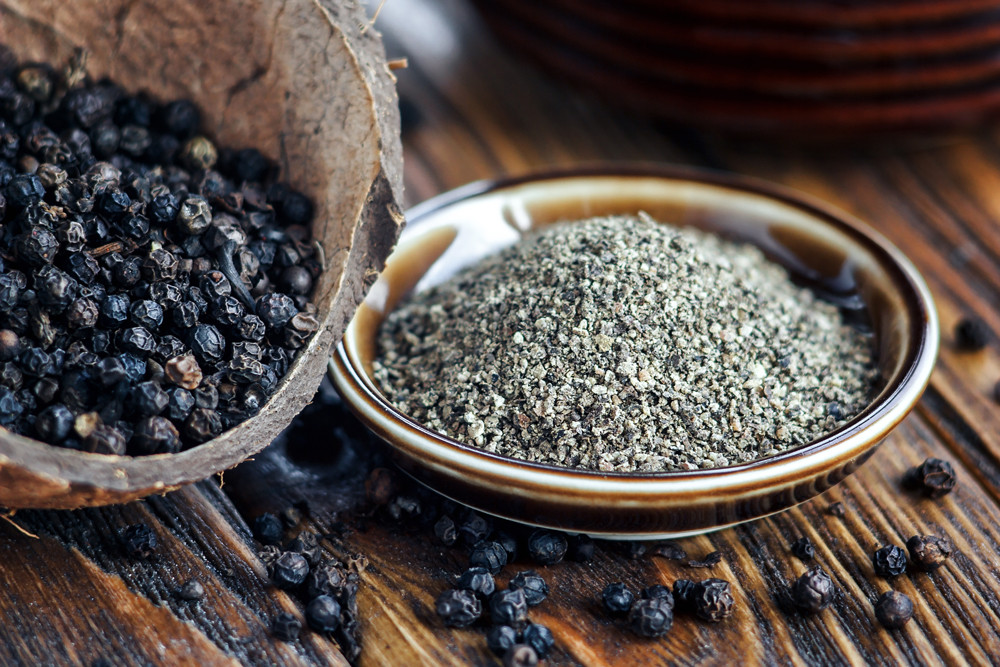Black pepper. It’s likely sitting on your kitchen counter right now, a ubiquitous presence in homes and restaurants across North America and beyond. While other spices might reside in the pantry, black pepper often enjoys pride of place, ready to season almost any dish imaginable. This seemingly simple spice is so common, we rarely stop to consider its origins. So, let’s delve into the question: where exactly does this king of spices come from?
Unpacking Black Pepper: More Than Just a Spice
To understand where black pepper comes from, it’s essential to know what it actually is. Peppercorns, the source of black pepper, are the fruits of a flowering vine belonging to the Piperaceae family, specifically Piper nigrum. These vines, characterized by their broad, green leaves, produce long, slender tendrils where clusters of berries develop and ripen. These berries, small in size, consist of a thin outer skin, minimal fruit pulp, and a single, relatively large seed at the center. The stage of ripeness at which these berries are harvested dictates the final type and intensity of pepper produced, influencing whether it becomes black, white, or green peppercorns. These are then processed using different methods to achieve the variety of pepper we find in our spice racks.
 Black Peppercorns on the Vine
Black Peppercorns on the Vine
Tracing the Geographical Roots of Black Pepper
The Piper nigrum vine is indigenous to the tropical regions of India, specifically the Malabar Coast. This South Indian origin is where black pepper’s journey began, and for centuries, India remained the primary source of this highly valued spice. Today, while still significant, India is no longer the sole producer. Black pepper cultivation has expanded across tropical climates worldwide. Vietnam has emerged as the leading producer and exporter, currently accounting for approximately 35% of the global black pepper supply. Following Vietnam, major black pepper producing countries include India, Brazil, China, and Sri Lanka, each contributing to the vast international trade network of this spice. The adaptability of the vine to various tropical environments has made black pepper a truly global commodity.
A Spice with a Storied Past
The global demand for black pepper is no modern phenomenon. For millennia, black pepper has been cherished not only for its culinary applications but also for its medicinal properties. Historically, it was utilized extensively in ancient medicine. Intriguingly, peppercorns were even discovered stuffed in the nostrils of Ramses the Great’s mummy, suggesting its use in ancient Egyptian preservation practices. In ancient times, pepper was also believed to possess remedies for ailments ranging from insomnia to toothaches, highlighting its multifaceted value beyond just flavoring food.
The ancient civilizations of Rome and Greece were particularly enamored with black pepper. Evidence of its prevalence in Roman cuisine is found in Apicius, an ancient Roman cookbook from the 4th century AD, where black pepper features in approximately 80% of the recipes. This underscores its central role in Roman gastronomy.
The immense desire for black pepper was a significant catalyst for historical exploration. Driven by the lucrative spice trade, explorers like Christopher Columbus and Vasco da Gama embarked on voyages seeking faster sea routes to India. Their quest was partly fueled by the ambition to secure quicker access to the pepper and other spices that were in high demand in the burgeoning European markets. This historical context reveals how profoundly black pepper has shaped global trade and exploration.
From Peppercorn to Pepper: Processing and Piperine
Black peppercorns, white peppercorns, and green peppercorns all originate from the same Piper nigrum fruit. The distinctions between them arise from different processing methods and stages of ripeness at harvest. Black peppercorns are harvested when the berries are almost ripe and then sun-dried, causing them to shrivel and darken. White peppercorns are ripened fully, soaked in water to remove the outer layers, and then dried, leaving just the inner seed. Green peppercorns are harvested when unripe and preserved, often in brine or vinegar, to retain their green color and fresh flavor.
The characteristic pungency of peppercorns comes from a chemical compound called Piperine, found in both the fruit and seed. Piperine is sensitive to heat, air, and light, which can degrade it over time. This is why it’s recommended to store peppercorns and ground pepper properly in airtight containers, away from light and heat, and to use ground pepper relatively quickly to maintain its optimal flavor and potency.
Related Products
Related posts:


